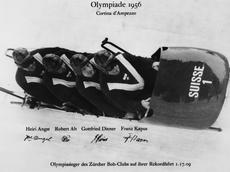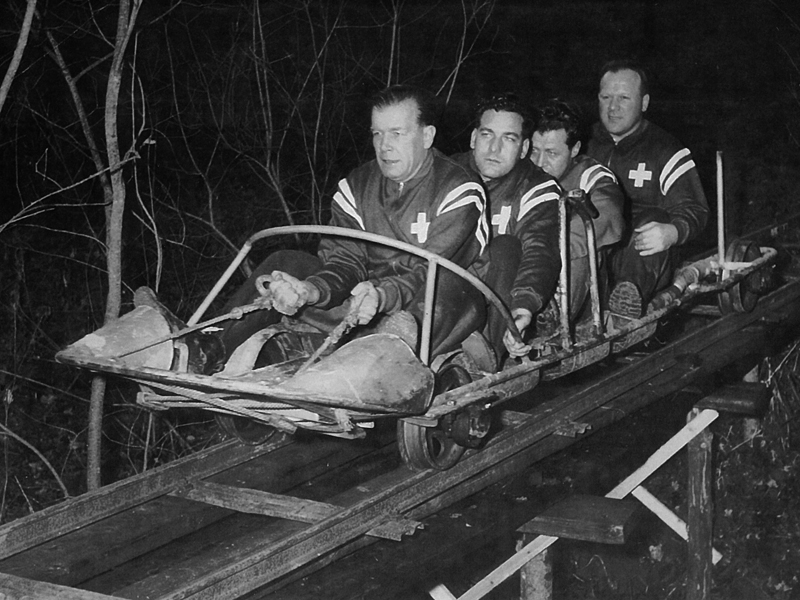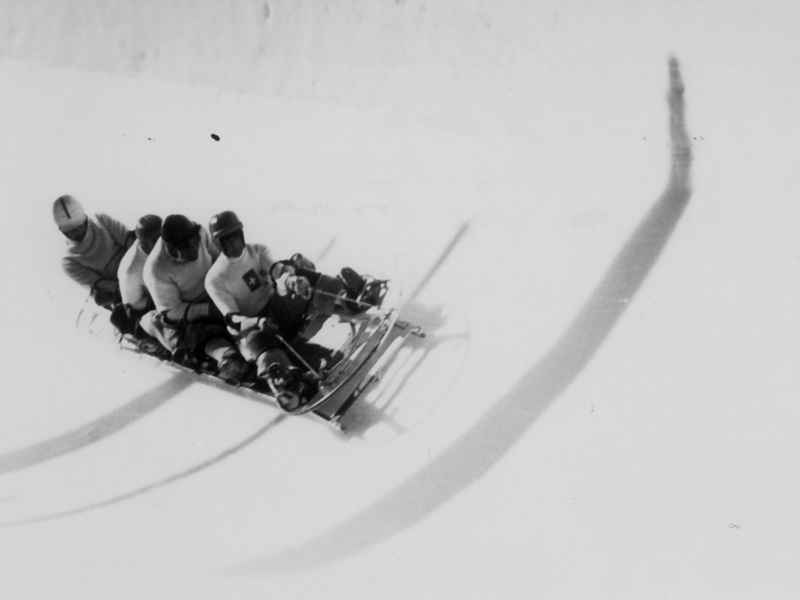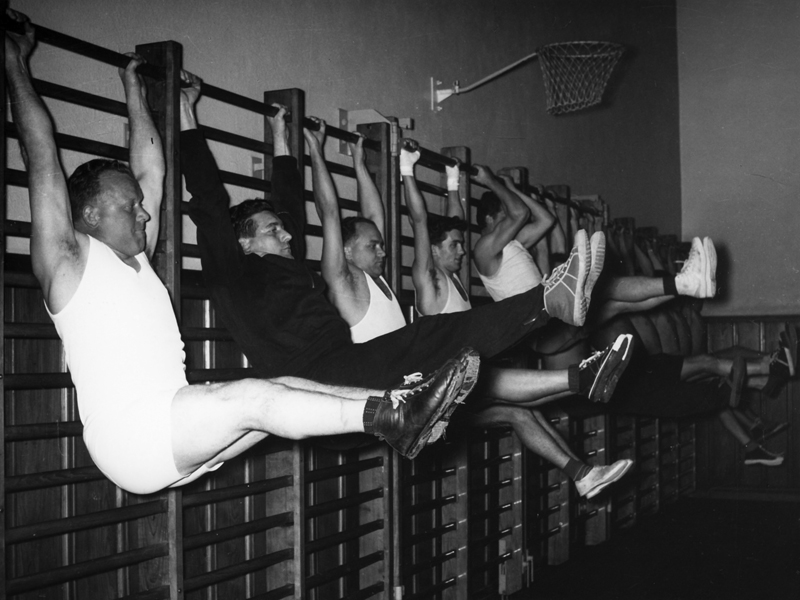From being fast to being fast and sporting
Together with the Swiss Bobsleigh Federation and industry partners, work is currently underway at ETH Zurich to build the Olympia bobs for the 2010 Winter Olympics. Olympic champion Gottfried Diener from the 1956 4-man bob explains why in the past money meant more than sporting spirit, why training on grass is no recipe for success and how Swiss bob crews came to invent the push start.

Gottfried Diener is the oldest surviving Swiss Olympic bobsleigh champion. Although his career as a bobsleigh crew member lasted only five years from 1951 to 1956, Diener, now eighty-two, had a decisive influence on bobsleigh racing during this time. In 1956, at the peak – and end – of his career as a bobsleigh racer, he won the gold medal together with Franz Kapus, Robert Alt, and Heinrich Angst in the 4-man bob in the Olympic Games at Cortina d’Ampezzo in Italy. He had already been crowned world champion at Cortina in 1954 and at St. Moritz in 1955.
Only the pilot was mentioned by name
How Diener entered bobsleigh racing is a rather complicated story, one which is set against the background of a sport that changed fundamentally over those years. Still highly indignant today at the fact that “only the pilot counted”, he shows the nomination team lists from that time, which record only the names of the pilots of the bobs. As an all-round talent in rifle and pistol shooting and much later a dab hand with a crossbow, who was also a successful national team gymnast and wrestler, the athlete met the national gymnast and bob racer Heinrich Angst in the early 1950s, and through him he entered bobsleigh racing.
Fritz Feierabend, at that time a world-famous bobsleigh constructor and bob pilot from Engelberg, had previously asked Diener whether he would be interested in racing with his team. 2000 Swiss francs would have secured him a place. Gottfried Diener says, “Money was what counted then, not sportsmanship.” A bobsleigh cost 6000 Swiss francs. Feierabend built about sixteen 2-man and 4-man bobs for each season. Diener explains that purchasers came from all over the world, because only Feierabend’s bobs had won. Even today people talk about the “Feierabend dynasty.”
The sport was missing in bobsleigh racing
Diener says that the other crew members bore the construction costs, which is why the pilot chose them for their ability to pay rather than on sporting criteria. On that occasion, Diener set Feierabend the condition that the former be allowed to select the crew, who must be given physical training. Diener explains, “I thought the way bobsleigh racing was operated at that time was a completely unsporting affair”. The pilot sat at the steering and only the last man push-started the bob. All the others sat in the bob from the outset, and their purpose was simply to be as heavy as possible to make the bob fast.
Feierabend and Diener did not agree at that time, Diener teaming up with Kapus, Alt, and Angst. Not until the world championship in Cortina d’Ampezzo in 1954 did the two race together in the same bob, because the pilot of the crew to which Diener belonged, Franz Kapus, had dropped out and Feierabend replaced him at short notice. The ad hoc team promptly won the world championship title.
Dry runs on grass and rails
When Diener entered the sport of bobsleigh racing in 1951, he trained the crew. He and the team’s brakeman, Heinrich Angst, knew each other from wrestling and wanted the team to receive thorough sports training. The training program covered everything from physical exercises on wall bars to performing flying somersaults over the bob. The sportsmen also wanted to train in summer, but soon discovered that conditions encountered with a bob on wheels and a grass slope were not comparable to an ice track, so they built rails on which the bob could roll. Diener says that, “We were the first bobsleigh team to undertake sports training and practiced the start on rails in the summer in preparation for the winter season.” They were also the first to introduce a characteristic feature of bobsleigh racing that is now taken for granted, namely that the whole crew had to take part in the running start. At that time, Feierabend was still the leading bobsleigh constructor. However, each team modified the bob according to their own needs, e.g. to correspond with the sizes of the crew members. The pedal spacing and the length of the steering rope had to be adjusted. Because all those in Diener’s team needed to be in the running start, handles had to be attached to the chassis to allow the pilots to leap into the accelerated bob.
“We could still win”
However, the new attitude to bobsleigh racing pioneered by Diener and his team was not the only thing that changed the whole sport of bobsleigh racing. At the 1952 Olympic Games in Oslo, the German crew at that time put so much weight on the scales that no other team stood a chance. The following competitions, from 1953 onwards, were the first to introduce a weight regulation. Diener says “The conditions that were imposed showed us straight away that weight was not the only thing that was important for victory.”
He follows with amazement the Citius project in which the bobs for the 2010 Olympics in Vancouver are being built in a collaborative project involving ETH Zurich, the Swiss Bobsleigh Federation and the industry. Diener says, “The number of people working on this project is impressive when I compare it with the conditions we operated under back then.” With a mischievous smile, he adds: “But we could still win!”
Bobsleigh construction has now become a science. Within the framework of preset conditions, attempts are made to optimize the decisive crucial points on the chassis. The best possible slippage for the bobsleigh runner and optimum aerodynamic properties together with a well-trained crew are now essential.
From toboggans to the bobsleigh
In the late 19th century, young Britons in St. Moritz used a board to fasten together two toboggans, the first of which could be rotated and steered using two ropes. They named their vehicle a “bobsleigh” and used it to travel down the road from St. Moritz to Celerina. The first “real” bob was built in 1888 in the Matthys blacksmith’s workshop in St. Moritz. The twin-toboggan design turned into a sledge made of steel. It consisted of the runners and a seating area for the drivers. Later on, the Feierabend family from Engelberg started bobsleigh construction and were a defining factor in the business for decades. Initially still with no bodywork and with circular runners made from steel tubes, it gradually developed into the present-day bobsleigh. The St. Moritz Bobsleigh Club is the world’s oldest bob club and is home to the first bob track, which opened in 1903, followed by tracks in Davos, Engelberg and Pontresina.












READER COMMENTS